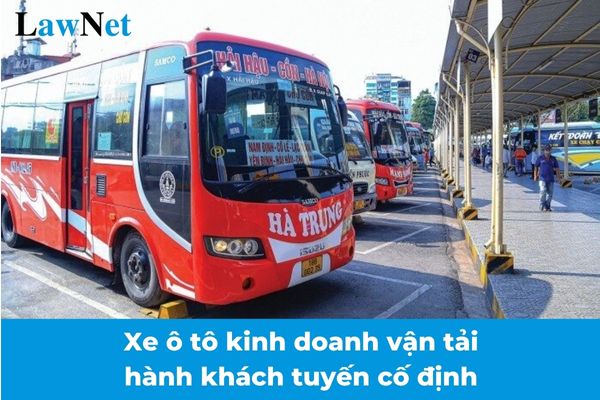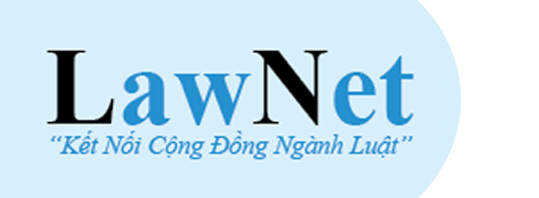What are regulations on vehicles for passenger transportation on fixed routes in Vietnam from January 1, 2025? Do passenger transportation on fixed routes incur VAT in Vietnam?
What are regulations on vehicles for passenger transportation on fixed routes in Vietnam from January 1, 2025?
Based on Article 4 of Decree 158/2024/ND-CP (effective from January 1, 2025), which governs vehicles for passenger transportation on fixed routes as follows:
- vehicles for passenger transportation on fixed routes
+ Must have prioritized seating for persons with disabilities, the elderly, and pregnant women;
+ Must display a sign “FIXED ROUTE VEHICLE” according to Form 01 Annex XIII attached to Decree 158/2024/ND-CP and affixed permanently at the top right corner directly below the position of the Inspection Stamp, on the inside of the front windshield of the vehicle;
+ Must have all necessary information posted on the vehicle.
- Vehicles used for passenger transfer transport
+ Use vehicles carrying up to 29 passengers (excluding the driver's seat);
+ Must display a sign “TRANSFER VEHICLE” according to Form 02 Annex XIII attached to Decree 158/2024/ND-CP and affixed permanently at the top right corner directly below the position of the Inspection Stamp, on the inside of the front windshield of the vehicle; must have all necessary information posted on the vehicle;
+ May only operate passenger transfer services within the local (provincial) area where the “TRANSFER VEHICLE” sign is issued.
Additionally, a transport business entity possessing a Transport Business License with fixed-route passenger transport is allowed to register and operate routes under the provisions of Article 22 of Decree 158/2024/ND-CP. Fixed routes must start and end at bus terminals that have been officially announced as operational.

What are regulations on vehicles for passenger transportation on fixed routes in Vietnam from January 1, 2025? Do passenger transportation on fixed routes incur VAT in Vietnam? (Image from the Internet)
Do passenger transportation on fixed routes incur value-added tax in Vietnam?
Based on Article 3 of the 2008 Law on Value-Added Tax, which specifies the subjects liable for value-added tax as follows:
Taxable subjects
Goods and services used for production, business, and consumption in Vietnam are subject to value-added tax, except for the subjects specified in Article 5 of this Law.
Additionally, according to Article 3 of Decree 10/2020/ND-CP, the following is defined:
Interpretation of terms
...
- Fixed route is a passenger transport route announced by a competent authority, defined by journey, schedule, departure bus terminal, and arrival bus terminal (start and endpoint for bus routes).
- Fixed-route passenger transport business is the passenger transport business by automobile with defined departure and arrival bus terminals, along with specific schedules and journeys.
- Fixed-route bus transport business is the passenger transport business by automobile with designated passenger pick-up and drop-off stops and operation according to a specific diagram with a determined distance and scope, including intra-provincial and inter-provincial bus routes. Details include:
a) Intra-provincial bus routes operate within the area of one province or centrally-run city;
b) Inter-provincial bus routes operate within the area of two or three provinces or centrally-run cities.
...
Furthermore, under Article 5 of the 2008 Law on Value-Added Tax as supplemented by Clause 1, Article 3 of the 2014 Law on Amendments to Tax Laws and amended by Clause 1, Article 1 of Law No. 106/2016/QH13, and Clause 1, Article 1 of the 2013 Amended Law on Value-Added Tax, exempt subjects from value-added tax as follows:
Subjects not subject to tax
...
- Public passenger transport by bus or tram.
...
Thus, passenger transportation on fixed routes are subject to value-added tax, except in the case of fixed-route transport operations by bus or tram.
What is the VAT rate for passenger transportation on fixed routes in Vietnam?
According to Article 11 of Circular 219/2013/TT-BTC, the standard VAT rate of 10% is applied as follows:
10% VAT Rate
The 10% tax rate applies to goods and services not specified in Articles 4, 9, and 10 of this Circular.
...
Simultaneously, according to Articles 9 and 10 of Circular 219/2013/TT-BTC on VAT rates of 0% and 5%, passenger transportation on fixed routes will be subject to a VAT rate of 10%.
However, pursuant to Article 1 of Decree 72/2024/ND-CP on VAT reduction, stipulated as follows:
VAT Reduction
- Reduce value-added tax for groups of goods and services currently applying the 10% tax rate, excluding the following groups of goods and services:
a) Telecommunications, financial, banking, securities, insurance, real estate trading, metals and pre-manufactured metal products, mining products (except coal extraction), coke, refined petroleum, chemical products. Details in Appendix I attached to this Decree.
b) Goods and services subject to special consumption tax. Details in Appendix II attached to this Decree.
c) Information technology as per information technology law. Details in Appendix III attached to this Decree.
...
- VAT reduction rate
a) Business establishments calculating VAT by deduction may apply a VAT rate of 8% for goods and services specified in Clause 1 of this Article.
...
Thus, passenger transportation on fixed routes will benefit from a VAT reduction and will be subject to a rate of 8%.

